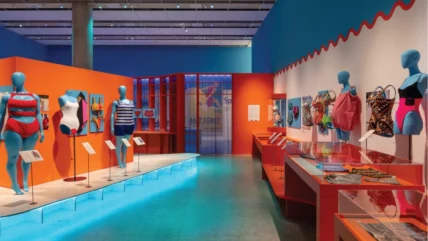
I CAME TO this Design Museum show as a lifetime enthusiast of the art and sport of swimming. From the age of two, when I toddled into an outdoor pool after my older brother, and had to be rapidly fished out, to the point in my early 20s when I discovered that regular swimming was a joyous antidote to the static nature of desk-bound, office work, I have relished my frequent immersions and continued, uninterrupted, through subsequent decades, including through two pregnancies. I even find myself now one of the millions of increasingly enthusiastic wild swimmers, and users of the proliferating Community Sauna Baths. So I tick almost every box that’s referenced in this show – apart from not being old enough to have worn the kind of hideous, knitted swimming one-pieces devised in the 1930s, as swimming morphed from something you did to avoid drowning into a popular leisure pursuit. Luckily, neither am I old enough to have suffered the silliness (and scratchiness) of 1950s and 1960s synthetic swimwear, fashioned as waist-cinching corsetry (shown here with some hilarious catwalk footage from Pathé newsreels). But I do possess pictures of earlier generations in all those incarnations.
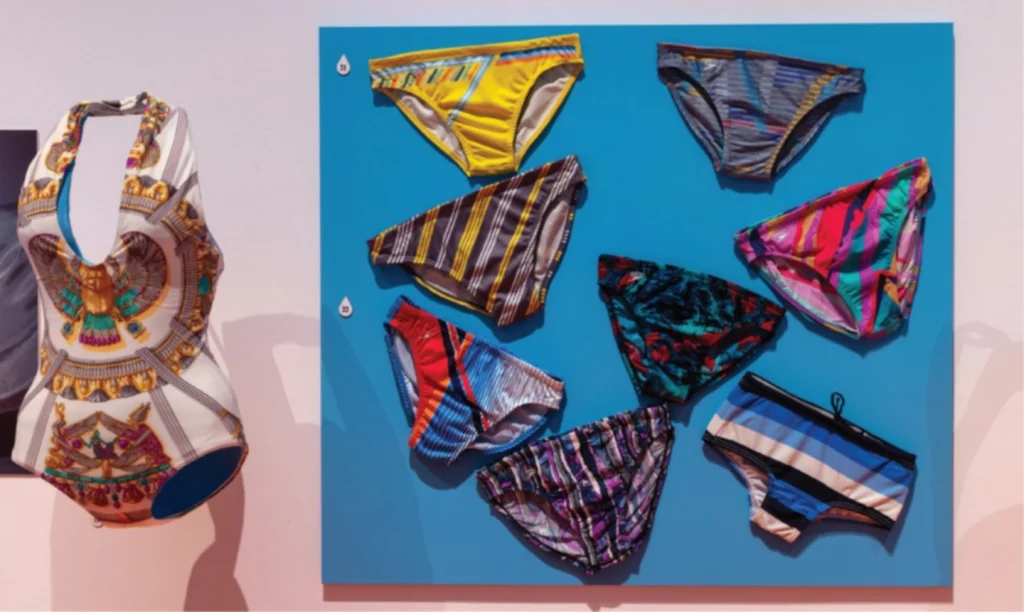
So I came primed to enjoy this show, which examines the evolution of swimming through the lens of sport, changing social mores and fashion. But, after spending an hour in the basement galleries of the Design Museum, mooching around the displays, I came out feeling strangely underwhelmed. Curated by the Design Museum’s Tiya Dahyabhai plus guest curator, fashion historian, TV presenter (The Great British Sewing Bee) and vintage clothing advocate, Amber Butchart, it’s not surprising that the approach favours swimwear fashions and material evolutions. And these are interesting up to a point. But more fascinating are the transformations that have happened in society as holidays by the sea/pool morphed from being the preserve of the rich and famous, to a mainstream obsession and then (thanks to social media) crucial lifestyle accessory and selfie backdrop – all in the past 80 years, since the launch of the Holidays with Pay Act of 1938. Context is everything, and we don’t get quite enough context here – or if we do, it feels like an afterthought. There is a panel about lidos in one corner, with a few seaside posters scattered around, and some testimonials from people who have campaigned successfully to save their outdoor pool. But the costumes are the core of the show, which, while illustrating changing attitudes and textile advances, never look less interesting than when pinned behind glass or draped over a mannequin. The most outlandish confections here simply look daftly unwearable. The Pamela Anderson Baywatch costume exhibit has grabbed attention for this show (as have Tom Daley’s speedos), but to me it just looks like an ordinary red costume, suspended in its glassy vitrine, lacking those famous curves.
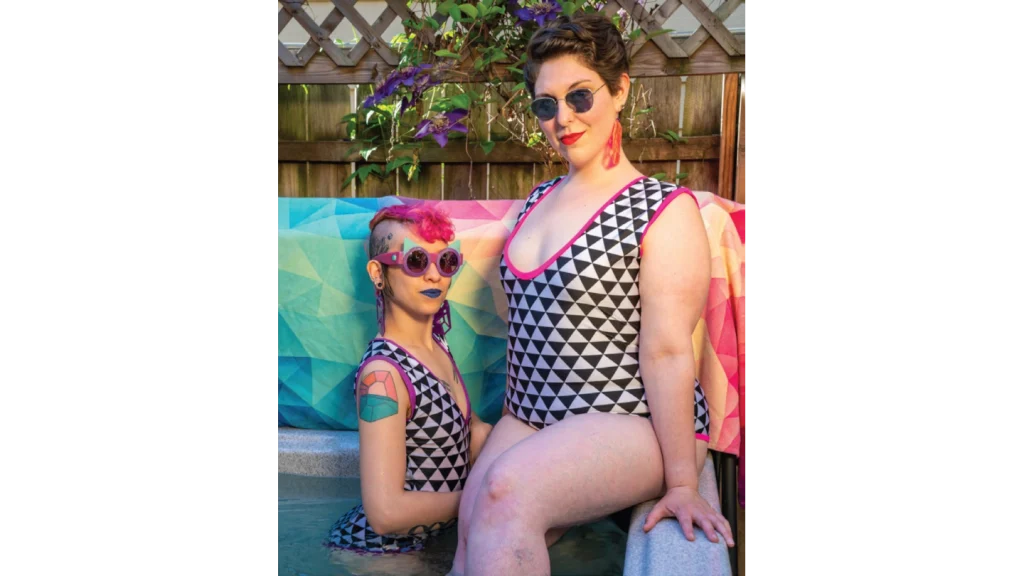
For a much more immersive dive into the design history of beach and pool culture I couldn’t help referring back to the show Art Deco by the Sea, which opened in February 2020 (a momentous month, with) at the Sainsbury’s Centre for Contemporary Art in Norwich. By focusing on the interwar period and the art deco aesthetic, it was able to situate the lifestyle and fashion aspects of swimwear within the whole burgeoning of lidos, seaside hotels and holiday camps powered by a distinctive architecture and design aesthetic, and facilitated by the growth of affordable rail travel and motor car ownership. There the period swim and leisure wear, marked by curves, flowing lines and joyous colour palettes, seemed like a gorgeous expression of that art deco spirit, and the whole definitely added up to more than the sum of its parts.
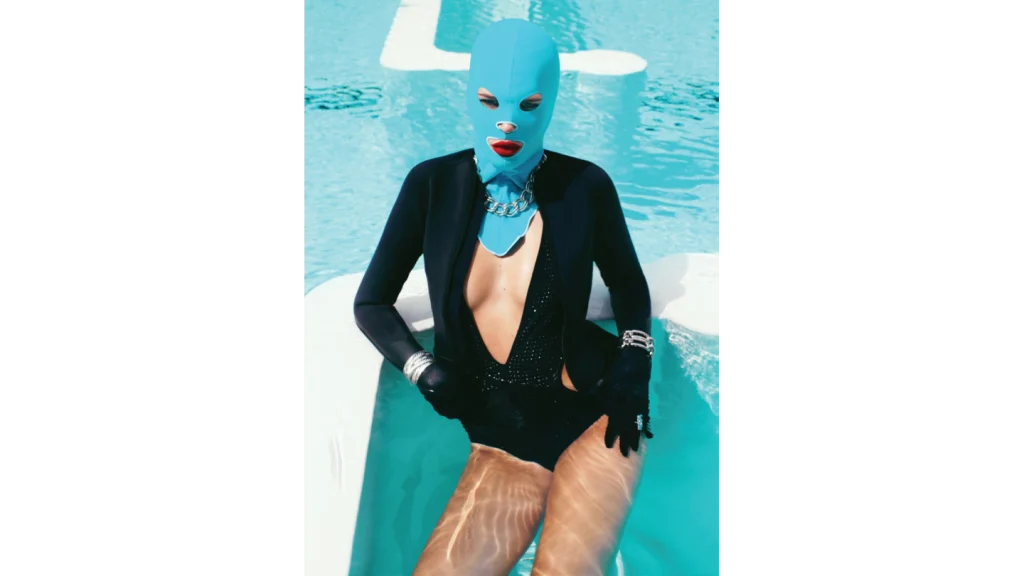
Here, the show does no more than touch on the phases of tourism and lifestyle fads that have ushered swimming in and out of popularity. It barely engages with the architecture of the pool – a fascinating subject I could expound on for hours, having gone many laps in every kind of pool, from lidos and the classic Victorian baths to architectural icons of 1970s Olympic pools. There is reference to the distinctive, triangular lido, the Jubilee Pool, in Penzance, recently restored by the same architects who designed this show, ScottWhitbyStudio. There’s also an architectural model of Zaha Hadid’s 2012 Olympic pool, which I swam in once, but felt disinclined to ever enter again, as it was clearly designed more for the pleasure of spectators than swimmers (the main, panoramic glass wall had also required covering in protective blue film to stop it from frying or blinding the swimmers when the sun was out).
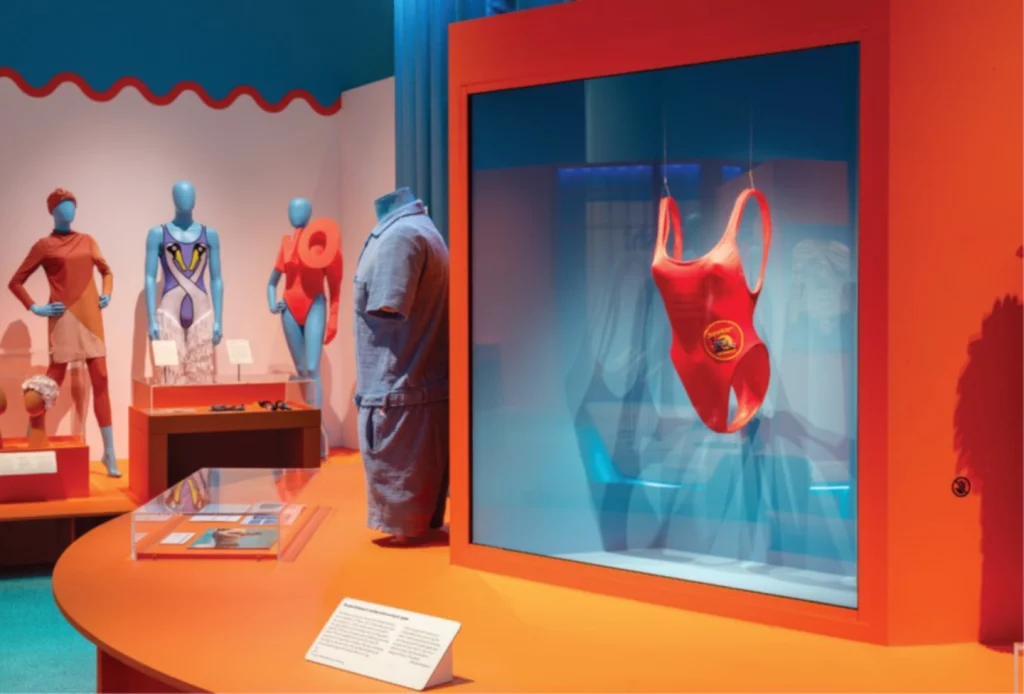
There is a smattering of important social history elements, including a film about how shockingly high drownings are among young first nation communities and people of colour, given decades of segregation in or exclusion from public pools, and lack of availability of free school swimming lessons. But this is tucked into a corner and surrounded by mannequins and demonstrations of fabric technology, so you could easily miss it. I did enjoy a documentary in the final gallery, Beyond the Blue, which tells the story of an inner-city London swim club, Swim Dem Crew, aimed at reclaiming the joy of swimming for all sizes and skin colours, and the community that has formed around it. But was it necessary to shoehorn in a section, at the end, on ‘mermaidcore’? (Perhaps I’m just showing my age – apparently, Halle Berry’s appearance in full mermaid regalia for the live action remake of The Little Mermaid kicked this off, and TikTok did the rest). I was sad that so little space was given to the astounding skills of the Haenyeo women who dive for seafood to feed their families off Jeju island, South Korea, risking their lives every time.
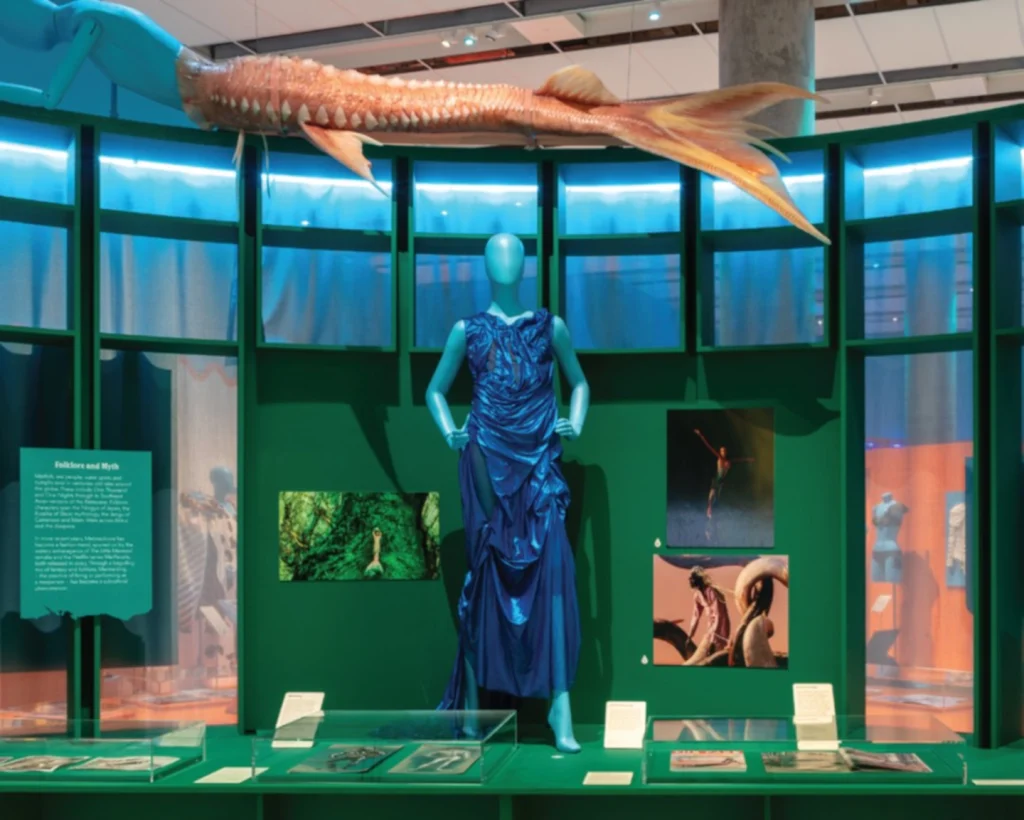
It was fun on the way there to ponder whether the swimwear made famous by particular movies and actors would appear, and sure enough, they had all those I listed: Ursula Andress in her Dr No bikini; Daniel Craig in his tight, blue shorts for Casino Royale (La Perla, since you’re asking). Luxury swimwear brand Orlebar Brown are sponsors of this show, but it surprised me that they have reproduced an outfit that even Sean Connery couldn’t pull off: that blue towelling belted onesie, worn in Goldfinger. Their version is displayed here.
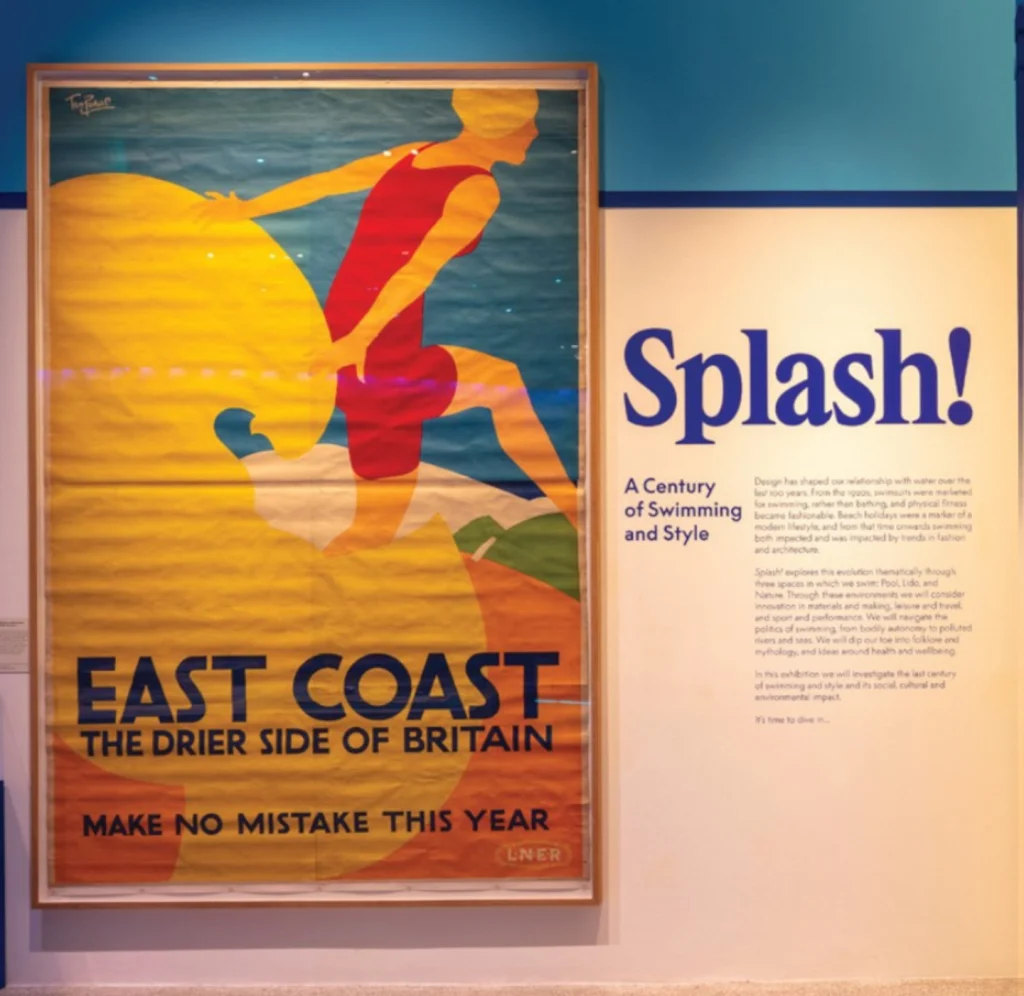
All in all, I’d say it’s not so much a deep dive of an experience as a paddle… or maybe a wave pool. You’ll find the odd elements uplifting, but will otherwise leave feeling a little deflated – and probably in need of a sugary snack.
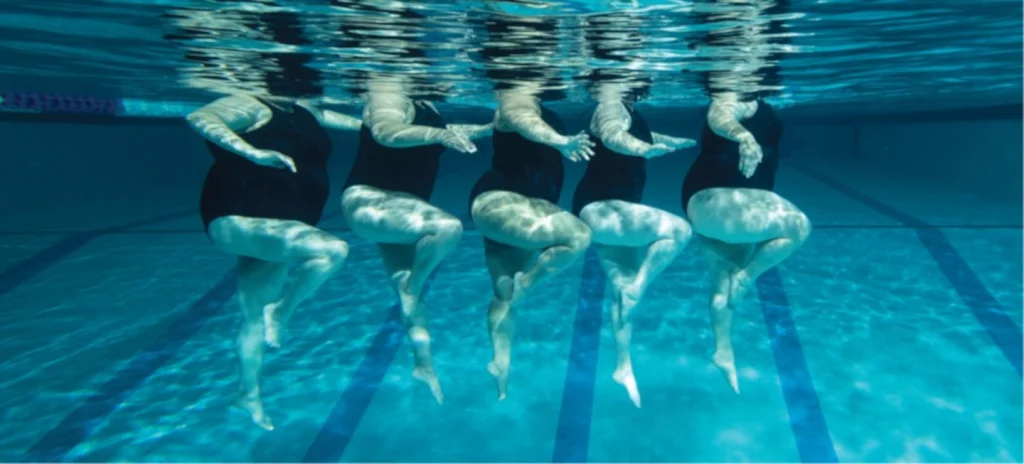
Splash: A Century of Swimming and Style is at the Design Museum runs to 17 August 2025





